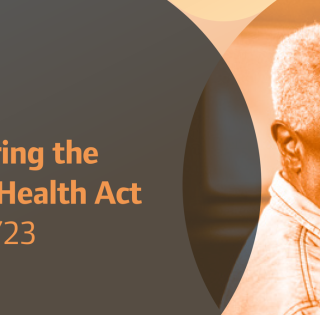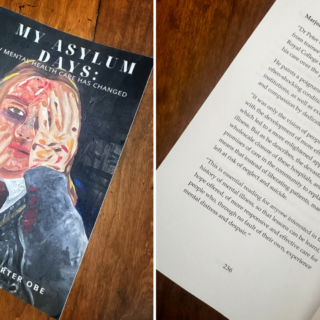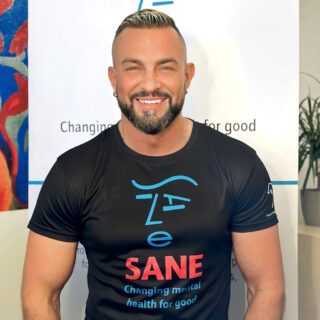A Creative Journey Towards Mental Health Advocacy with Matt Weston
In the realm of creativity, where ideas converge with emotions, Matt Weston’s journey stands out as a sign of authenticity and empathy. With a career spanning 15 years, transitioning from science to the world of advertising and writing, Matt’s narrative is intertwined with a profound exploration of mental health.
Initially trained in biochemistry, Matt felt a tug towards his neglected creative side, prompting him to pursue illustration and eventually find his calling in advertising. However, amidst his professional success, the shadows of anxiety and depression loomed large, silently gnawing at his mental well-being.
In a candid exploration of his own struggles, Matt reflects on the transformative power of cognitive behavioural therapy (CBT) and the pivotal role of communication in combating mental health challenges. His works, ranging from impactful campaigns to insightful books, serve as testimonies to the intersection of imagination and mental health advocacy.
In this exclusive interview with Spotlight for mental health charity SANE, Matt invites us into the depths of his journey, shedding light on the process behind his groundbreaking campaigns and offering invaluable insights into the importance of destigmatising conversations around mental health.
Join us as we delve into the mind of a visionary whose words and actions resonate far beyond the realms of advertising, inspiring hope and fostering understanding in the face of adversity.

Could you share a bit about your background and what led you to become a creative director and writer, particularly focusing on mental health issues?
I’ve been a creative for 15 years, but I was originally a scientist. I did biochemistry and worked there for 2 years, but I kind of realised that I’d been neglecting my creative side. I did an illustration course at East Anglia Polytechnic but after that, I didn’t know what to do.
So, I went to Australia, started travelling around like a backpacker and got a job as a designer. Then, I started looking at advertising because I was quite interested in ideas. I realised I was halfway between something artistic and something analytical. So I started studying ideas, did a course, and got a job out of it in an advertising agency in Sydney.
I realised that I was more of a writer than an art director. Every time I wrote, it felt like flying. It was nice, and there were good ideas. Initially, I did well in my career and started off in traditional advertising. But then I swiftly knew that things were going digital, so I got into digital advertising as well in Sydney. Then, I got married and decided to come back to Europe, specifically France.
Where the mental health comes in for me, I suppose, is during that move and various other moves that I’ve made. Advertising is very stressful, so I felt my body language actually rolling out. I started suffering from anxiety and it started weighing on my mental health. My hand does this thing and grips the chair like just thinking about it.
At the time, I didn’t really know what it was, to be honest. I just thought, ‘Wow, I’m not dealing with this job in Paris very well.’
It was difficult, but I think my anxiety at the time was making it worse. I don’t think I even had the language to deal with it. I didn’t know about it. I pretty much went for the next few years without knowing why I was suffering. I just thought that I was an intense and highly stressed individual. You beat yourself up mentally but that just exacerbates the problem.
From Paris, I went to America for a while, and then finally, I returned to England. I started getting CBT (cognitive behavioural therapy) counselling, which was really good for me since I was in a bigger agency in London. That was quite stressful because there was a lot going on and coming back to England costs money. Money is always there, which added to a lot of stress as well. The counselling was helpful for me initially, but I thought that it probably just held my anxiety at bay.
I started learning about anxiety, and I found the process of CBT quite interesting. It’s almost like you have homework every day, like you have to work on yourself. I suppose once you do homework for that many days, you start getting interested in what that is all about.
The “Your depression doesn’t want you to talk” campaign had a profound impact on raising awareness. What personal connection or experiences inspired you to address mental health, and why did you choose SANE as the partner for this campaign?
I was fairly senior in my career at this point in a big agency and decided I wanted to do something proactive because in advertising, you’re selling stuff to people and sometimes it feels like you need to do something, to give something back to people. I felt that it was time that I did something proactive like a campaign and I immediately thought about mental health.
At the time, my partner and I started working on some ideas. My anxiety had also got worse that I started feeling depressed. I was in a really dark place and it’s the second time in my life that I’ve been there, to be honest.
But it did enable me to come up with a really strong insight: when you are depressed, you find it really hard to talk about it. The irony is, if you talk about it, it’s a good thing. You need to talk about things to work them out sometimes because we can all be trapped in our heads. But once you talk about it, it’s out there.
I found that a really interesting tension. The idea grew from that and that’s how I came to SANE. When I visited your website, I thought that it had a lot of information about mental health and seemed to be knowledge-based. Then, I realised it had a call line and I just thought it was right.
I got in touch with Jonathan from SANE, whom I worked with on the campaign. I think the most amazing thing was when I came to your offices, was introduced to everyone and got shown around the call centre, it really hit me emotionally. From that point onwards, I felt that this is something I have to be involved with in some way.
After the campaign, I was still working at the big agency, but COVID hit and I lost my job, so it was quite a difficult time. I’ve got a family and I was really worried about supporting them. But at the time, I was actually writing about anxiety.
As a creative, we’re really good at taking a complicated problem and distilling it down to something simple, often through metaphors. So, I started writing a book about negative thoughts and the fundamentals of cognitive behavioural therapy. I basically took the ten types of negative thoughts as CBT tells you and made some fun metaphors from it. There’s plenty of self-help books out there but sometimes, information needs to be in a more accessible language and maybe with some cartoons, which I also drew.

I went on with it and did a Kickstarter, which went really well. I got around 250 people from around the world backing the book and had some incredible people getting in touch with me through that project. I had a Navy captain from America and a government employee who sent me an e-mail and said they were worried about their mental health. It was incredible. I created something that actually reached people on a probably deeper level than I’d ever done in my advertising career.
When I wrote about mental health, I just thought there must be some ground where I can be creative and involved with mental health in some way. From that moment on, I’ve continued my creative career. I’m now working in PR and advertising. I’m also writing and illustrating another book, which contains metaphors for all the different types of anxiety people have.
How did you and your team navigate the creative process to ensure the campaign effectively communicated the challenges of depression and encouraged people to reach out for help?
I had insight into depression myself so that was useful. We had this idea as essentially a person who wanted to make a call, but a shadowy form, which is depression, was forcefully stopping them. We wanted to do something that would shock people a little bit, and sometimes, it’s a good hook to make them listen.
It just always had to come from a place of authenticity. It’s almost like when you’re depressed, you’re in the darkest hole. You can’t find a way to get out. So, that had to be the tone and SANEline was the light at the end of the tunnel. I think it was very important to show that contrast between the darkness and the light. Because I feel like when you’re depressed, you just feel that there’s no way out. But something very simple can be enough for that day to keep you going and make a change a little bit at a time.
I’ve seen a lot of ads that don’t do it well like they present a problem-solving scenario or they almost sanitise mental health. But I remember Marjorie, chief executive of SANE, saying to me that mental health can be dark; it can be unforgiving, and it’s not romantic, so that’s why we wanted it to be visceral and hit home.
The film for the campaign, shot by Youness Benali, received widespread acknowledgment for its accurate depiction of the struggle with depression. Can you share some insights into the creative decisions made during the filming process that contributed to such a powerful representation?
When we were working on it, we thought that it needed to be more than just a film. Social media is also pretty important, so we had to think of something that would work there as well as digitally. I think it’s a place where everyone does talk about their hidden feelings. They almost throw it out into the world. So, that was our starting point.
We talked to a young creative team and they thought that, if our campaign is about not talking, is there something on social media we can do where people go quiet? We then thought about messages like the three dots you get when someone’s typing and you don’t know when they’re going to say anything. It just felt like that’s something quite zeitgeisty. It’s like a shorthand for not being able to talk.
So, we immediately thought about finding people who talk a lot online like Stephen Fry, who agreed to take part, among others. We were very lucky, but we didn’t know whether it was going to work. When the comments started pouring in, we thought this could really make an impact. And that was special.

Given the success of your campaign and the increase in calls to SANE’s helpline, what advice would you offer to individuals who are looking to start conversations about mental health, especially regarding depression? How can we break down the barriers that often hinder open discussions on this topic?
Personally, the increase in calls meant a lot. I’ve been there, and I’ve felt so isolated. Knowing that people have felt the same is enough, but knowing people were brave enough to call is probably one of the best things I’ve had in my career.
My personal advice would be from a male perspective. There’s a worry that talking about things means you’re weak. When I was depressed, I remember speaking to a good friend about it, but he turned around and went, ‘Oh, shut up.’
Perhaps, my generation was taught to button it. One of my favourite bands, Aisles, wrote a song about this. It was just a bunch of phrases about piping down and not speaking about it, but it was relevant to me.
The irony there is you feel weak for talking, but it’s actually really brave. It takes guts to talk about stuff like that because you are, in a way, making yourself vulnerable. You’re actually doing something that a lot of people are scared of. I feel like it’s really important to talk – not just for men, but for everyone. The more we do that, the more we talk, the better the world will be. This goes for plenty of other areas as well.
When I was depressed, getting over it felt insurmountable, like a wall that you just couldn’t scale. But every day I woke up and I thought, ‘Okay, today’s a new day, let’s just see how it goes.’ Some days, you wake up and you can’t get out of bed and think, ‘I really don’t feel like it.’ And some days you get up and begin it like ‘Oh, today’s all right.’ It almost sounds ridiculously simple. You may feel overwhelmed and you can’t begin to talk about it sometimes, but everyone goes through different things and everyone gets there for different reasons. I just treat every day as it comes, one day at a time. And I just know that there is a way out and it’s not hopeless at all.
Matt Weston is available for collaborations and new projects.
Learn more: westoncreative.net
Or contact him at: matt@westoncreative.net





